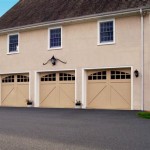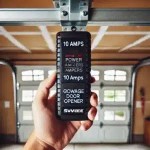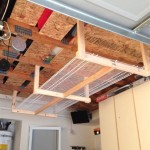Famous Garage Pantry Cabinet Ideas for Kitchens
The concept of utilizing garage space for pantry storage has gained significant traction in recent years. This trend arises from the increasing need for additional storage within the kitchen, particularly in homes where the existing pantry space is insufficient or non-existent. Transforming a portion of the garage into a functional pantry area presents a practical solution for storing non-perishable food items, bulk purchases, and kitchen appliances that are not used on a daily basis. This article explores a variety of garage pantry cabinet ideas, focusing on their functionality, design, and suitability for different kitchen and garage layouts.
Before embarking on a garage pantry project, careful consideration must be given to several factors. These include climate control within the garage, potential pest intrusion, and the overall accessibility of the planned pantry area. Garages are often subject to temperature fluctuations and humidity levels that can negatively impact food storage. Additionally, ensuring adequate protection against insects and rodents is critical. The design and layout should prioritize ease of access and efficient organization to maximize the utility of the space.
Implementing a garage pantry often involves strategic use of shelving, cabinets, and other storage solutions. The selection of appropriate materials is crucial to withstand the garage environment. Metal shelving units, plastic storage bins, and sealed cabinets are frequently employed to protect contents from moisture, dust, and pests. Furthermore, proper labeling and inventory management are essential for maintaining an organized and efficient pantry.
Maximizing Space with Vertical Storage Solutions
One of the primary advantages of using the garage for pantry storage is the potential for utilizing vertical space. Unlike traditional kitchen pantries, garages often offer higher ceilings, allowing for the installation of taller shelving units and cabinets. This vertical orientation maximizes storage capacity and prevents items from being stacked haphazardly on the floor. Floor-to-ceiling shelving units can accommodate a significant volume of canned goods, dry ingredients, and other pantry staples.
When designing vertical storage, it is crucial to consider the accessibility of items stored on higher shelves. Using step stools or ladders can provide access, but strategically placing frequently used items on lower shelves can improve convenience. Adjustable shelving systems offer flexibility in accommodating items of different sizes and shapes. Open shelving can provide easy visibility, while closed cabinets can conceal clutter and protect items from dust and light.
Another effective vertical storage solution involves utilizing the wall space above existing garage features, such as workbenches or storage lockers. This allows for the creation of additional pantry shelves without encroaching on valuable floor space. Wall-mounted shelves can be installed at varying heights to accommodate different types of items. The use of wire shelving can promote air circulation and prevent moisture buildup, which is particularly important in garage environments.
Furthermore, specialized vertical storage solutions, such as can rack organizers and spice racks, can be incorporated into the garage pantry design. These organizers help to maximize space and prevent items from getting lost or forgotten at the back of the shelves. Clear containers and consistent labeling can further enhance organization and make it easier to locate specific items when needed.
Utilizing Different Cabinet Styles for Optimal Organization
The choice of cabinet styles plays a significant role in the functionality and aesthetics of a garage pantry. A variety of cabinet styles are available, each offering unique advantages in terms of storage capacity, accessibility, and protection. Selecting the appropriate cabinet style depends on the specific needs and preferences of the homeowner, as well as the overall design of the garage and kitchen.
Base cabinets, which sit directly on the floor, provide sturdy and accessible storage for heavier items, such as large appliances and bulk food containers. These cabinets can be customized with drawers, shelves, and pull-out organizers to maximize space utilization. Adding a countertop to the base cabinets can create a convenient workspace for preparing food or organizing groceries. Installing base cabinets with adjustable legs can further enhance stability and allow for leveling on uneven garage floors.
Wall cabinets, mounted on the wall above the base cabinets, offer additional storage for lighter items, such as canned goods, spices, and baking supplies. These cabinets can be fitted with doors to conceal clutter and protect contents from dust and light. Glass-fronted wall cabinets can provide visibility while still maintaining a clean and organized appearance. Ensuring that the wall cabinets are securely mounted to wall studs is essential for safety and stability.
Tall pantry cabinets, extending from floor to ceiling, offer maximum storage capacity in a relatively small footprint. These cabinets are ideal for storing a wide variety of items, from food supplies to small appliances. Tall pantry cabinets can be customized with adjustable shelves, drawers, and door organizers to accommodate different storage needs. Incorporating pull-out shelves can improve accessibility to items stored at the back of the cabinet.
Rolling cabinets or carts provide portable storage solutions that can be easily moved around the garage as needed. These cabinets are particularly useful for storing items that are frequently used or need to be accessed in different locations. Rolling cabinets can be customized with drawers, shelves, and work surfaces to meet specific storage requirements. Ensuring that the wheels are lockable can prevent the cabinet from rolling unintentionally.
Addressing Environmental Factors and Pest Control
Garages are inherently susceptible to environmental factors such as temperature fluctuations, humidity, and dust accumulation, which can negatively impact food storage and attract pests. To ensure the long-term viability of a garage pantry, it is crucial to address these challenges proactively. Implementing appropriate climate control measures, sealing gaps and cracks, and establishing regular cleaning routines are essential for maintaining a safe and sanitary pantry environment.
Temperature control is paramount in preventing food spoilage and maintaining the quality of stored items. Garages that are not insulated can experience extreme temperature swings, which can accelerate the deterioration of food products. Insulating the garage walls and ceiling can help to moderate temperature variations and minimize the risk of spoilage. Consider using insulated garage doors, and sealing any drafts or cracks.
Humidity control is equally important in preventing mold growth and maintaining the integrity of packaging materials. High humidity levels can cause canned goods to rust, paper products to become soggy, and dry ingredients to cake together. Installing a dehumidifier in the garage can help to reduce humidity levels and protect stored items from moisture damage. Ensure proper ventilation by opening windows or installing a ventilation fan.
Pest control is a critical aspect of garage pantry maintenance. Garages are often targeted by rodents, insects, and other pests seeking food and shelter. Sealing any gaps or cracks in the walls, floors, and ceilings can help to prevent pests from entering the garage. Store food items in airtight containers to prevent pests from accessing them. Regularly inspect the garage for signs of pest infestation and take appropriate measures to eliminate any detected pests.
Establishing a regular cleaning routine is essential for maintaining a clean and sanitary garage pantry. Sweep or vacuum the floor regularly to remove dust, dirt, and debris. Wipe down shelves and cabinets with a damp cloth to prevent the accumulation of grime. Regularly inspect food items for signs of spoilage or infestation and discard any affected items promptly. Consider using natural pest repellents, such as peppermint oil or bay leaves, to deter pests without the use of harmful chemicals.
In addition to the above measures, consider adding weather stripping around the garage door. Add screens to any windows in the garage. This will ensure no gaps for pests or rodents to enter the garage. In general, a tightly sealed garage will go a long way in protecting food items in the pantry.
By carefully considering these environmental and pest control factors, homeowners can create a garage pantry that is both functional and sustainable. This will also ensure that all potential issues are taken into account, creating a storage space that is both safe and practical.

How To Diy A Kitchen Appliance Garage Semistories

25 Ideas For Kitchen Appliance Garages

How To Diy A Kitchen Appliance Garage Semistories

How To Diy A Kitchen Appliance Garage Semistories

How To Diy A Kitchen Appliance Garage Semistories

What Is An Appliance Garage How To Build

Kitchen Appliance Garage Diy Angela Marie Made

Garage Storage Cabinets Design And Install Closet Factory

The Modern Day Appliance Garage A Moveable Backsplash To Hide Our Small Appliances Chris Loves Julia

Walk In Pantries Vs Cabinet
Related Posts








